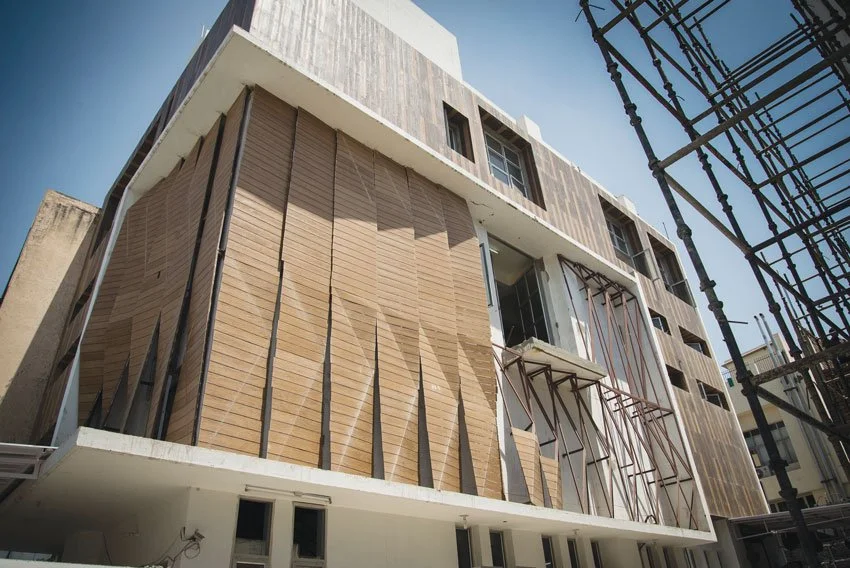Impacts of Innovative Technologies on Net Zero House Architecture
Net-zero house architecture refers to the design and construction of homes that are highly energy-efficient and produce as much energy as they consume on an annual basis. These homes are designed to minimize their environmental impact by reducing their energy consumption, using renewable energy sources, and incorporating sustainable building practices and materials.
Innovative technologies have revolutionized the way we approach sustainable architecture, particularly in the context of net-zero homes. These new technologies have enabled architects and designers to create homes that are not only energy-efficient but also provide greater comfort, convenience, and functionality. From smart home systems and renewable energy solutions to advanced insulation and building materials, innovative technologies are driving the evolution of net-zero house architecture.
Energy-Efficient Building Envelope
Parametric Façade for Molded Dimensions Factory, Gurgaon, designed by rat[LAB] in collaboration with Design Plus, New Delhi. Photo credit: MGS Architecture.
The building envelope is a crucial aspect of net-zero architecture as it plays a significant role in achieving energy efficiency and sustainability in modern house design. The building envelope consists of the walls, roof, windows, doors, and foundation.
One of the most significant benefits of a well-designed building envelope is improved energy efficiency. The building envelope can help to reduce energy consumption in new house designs by minimizing the amount of energy needed for heating, cooling, and lighting. For example, a well-insulated building envelope can significantly reduce heat loss during the winter and heat gain during the summer, reducing the need for heating and cooling systems. This, in turn, can lead to lower energy bills and a reduced environmental impact.
Another benefit of a well-designed building envelope is improved indoor air quality and comfort. The building envelope can help to prevent moisture infiltration. It can also help to reduce drafts and temperature fluctuations, providing a more comfortable living environment for the occupants.
Smart Home Technology
Smart home technology is becoming increasingly important in net zero architecture as it can improve energy efficiency, comfort, and convenience for occupants. It can be integrated into the building design and systems to optimize energy consumption and reduce waste.
One of the primary benefits of smart home automation is energy efficiency. Smart home technology can be used to monitor and control energy use in real-time, optimizing energy consumption and reducing waste. For example, smart thermostats can adjust heating and cooling systems based on occupancy and weather conditions, reducing energy consumption and improving comfort for the occupants. Smart lighting can also be programmed to turn off when not in use, reducing energy waste and lowering energy bills. Smart home automation can also improve indoor air quality and comfort.
Passive Solar Design
A home with a passive solar house design. Photo credit: ecohome.
Passive solar design is a technique that uses the natural energy of the sun to heat and cool a home, without the use of mechanical systems. This is achieved through careful consideration of the orientation, insulation, ventilation, and shading of a building.
Passive solar design reduces the need for external energy sources, which helps to reduce greenhouse gas emissions and combat climate change. This makes it an environmentally sustainable solution that can contribute to a more sustainable future.
Passive solar design also offers financial benefits to homeowners. By reducing the need for mechanical heating and cooling systems, it can significantly lower energy bills and increase the resale value of a home.
Rain Harvesting System
A BillionBricks’ Net Zero Home with a Rain Harvesting System
Rain harvesting is the process of collecting rainwater from rooftops and other surfaces, and storing it for later use. This water can be used for a variety of purposes, including watering plants, flushing toilets, and even drinking with proper filtration.
There are numerous benefits to using rain harvesting systems in net zero home architecture. Firstly, it reduces the reliance on municipal water, which can help to conserve water resources and reduce water bills. Additionally, using rainwater for non-potable purposes, such as watering plants and flushing toilets, can help contribute to a more sustainable water system.
Rain harvesting systems can also help to reduce stormwater runoff, which can contribute to flooding and erosion. By capturing rainwater, it can be used on-site, which can help to mitigate the negative effects of stormwater runoff on the surrounding environment.
How BillionBricks Utilizes Innovative Technologies in Building Net Zero Homes
A BillionBricks’ Self-sufficient, Net Zero Home in India
BillionBricks utilizes innovative technologies to build net-zero homes that are energy-efficient, cost-effective, and environmentally friendly. One of the innovative technologies that we use in building net-zero homes is renewable resources such as solar panels to power our homes. By utilizing solar panels, BillionBricks is able to reduce the homeowner’s reliance on traditional energy sources.
You can email us at hello@billionbricks.org to know more about our projects.
Sources
Energy.gov. (n.d.) About Zero Energy Building. Retrieved from https://www.energy.gov/eere/buildings/about-zero-energy-buildings
Environmental Protection Agency. (2023). Renewable Energy at EPA Retrieved from https://www.epa.gov/greeningepa/renewable-energy-epa
ArchDaily. (2022). What is Net Zero Architecture? Retrieved from https://www.archdaily.com/977740/what-is-net-zero-architecture
Energy Education. (n.d.) Building Envelope. Retrieved from https://energyeducation.ca/encyclopedia/Building_envelope
Constellation. (n.d.) What is a smart home and what are the benefits? Retrieved from https://www.constellation.com/energy-101/what-is-a-smart-home.html






